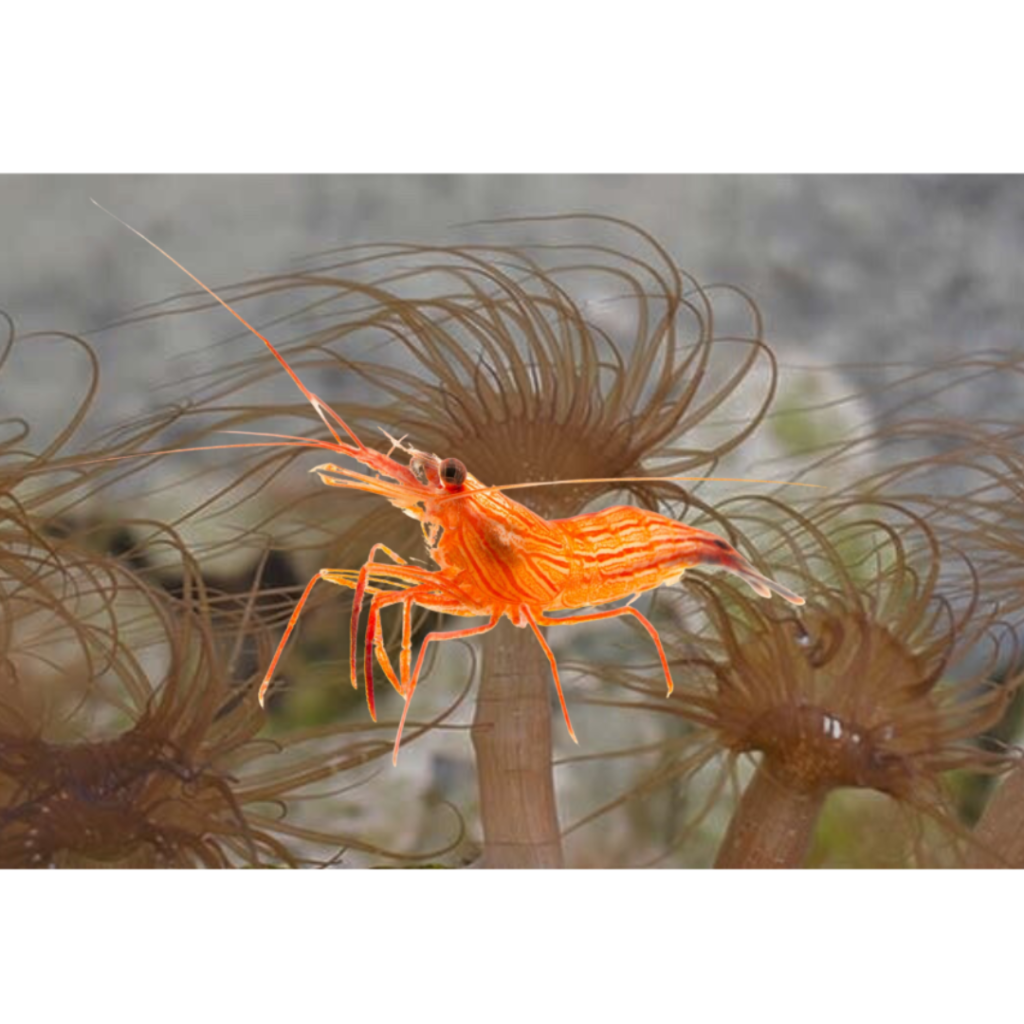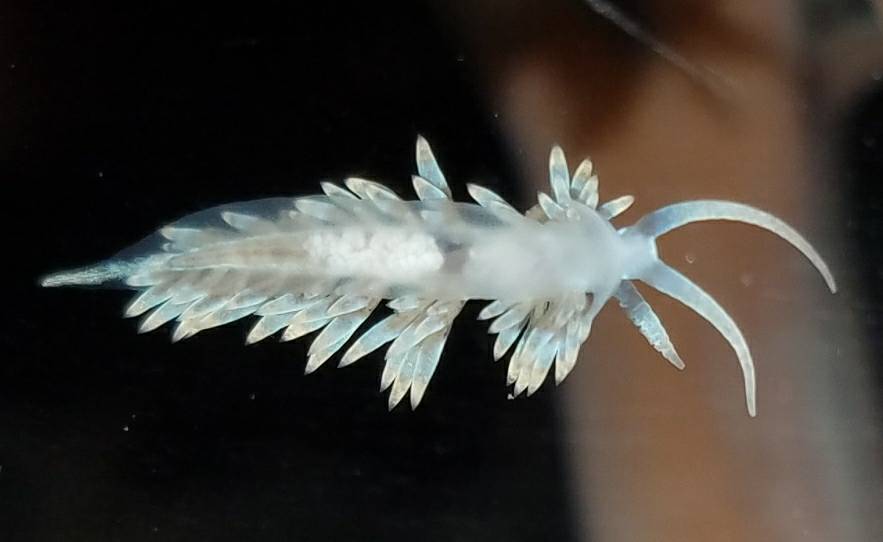Are you tired of battling the persistent and invasive Aiptasia anemones in your reef aquarium? Look no further than the vibrant, hardy, and fascinating Aiptasia eating Peppermint shrimp (Lysmata wurdemanni).
These shrimp are not only reef-safe but are also hailed for their voracious appetite for Aiptasia anemones. In this article, we will explore everything you need to know about these incredible invertebrates, including their diet, reef safety, lifespan, tank compatibility, hardiness, and other essential information.
Read more on How to Get Rid of Aiptasia Anemones
A Closer Look at Peppermint Shrimp
Peppermint shrimp, with their striking red and white stripes, are fascinating creatures that bring color and excitement to any saltwater aquarium.
They are active scavengers, spending their time exploring the tank, searching for food, and cleaning the aquarium of any unwanted elements.
One notable aspect of their behavior is their preference for nocturnal activity. Peppermint shrimp are more active during the night, emerging from their hiding spots to scavenge for food and explore their surroundings.
During the day, they typically remain hidden among live rock or crevices, making them somewhat elusive to observe. Providing ample hiding spaces in your tank will make your Peppermint shrimp feel more secure and comfortable.
Related: Aiptasia Eating Filefish: The Ultimate Solution for Aiptasia Control
Are Peppermint Shrimp Reef-Safe?
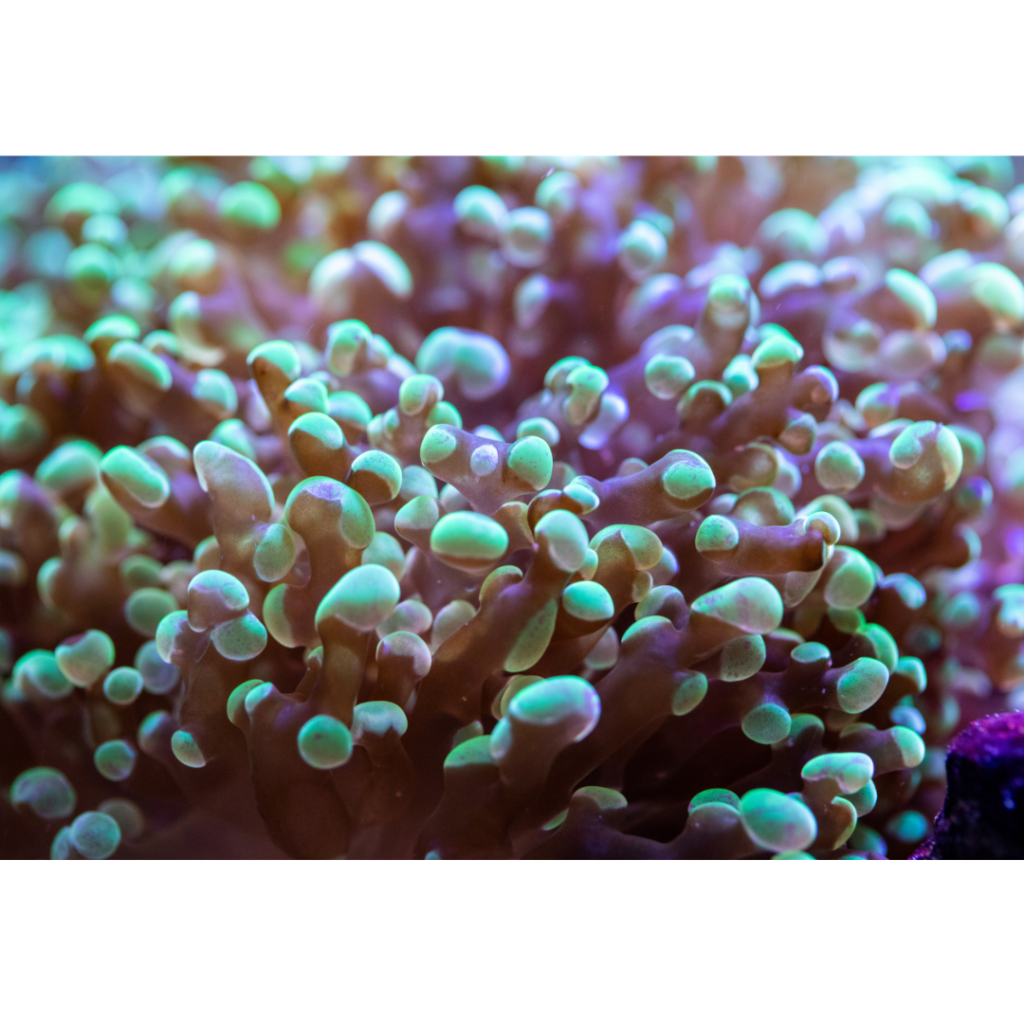
Peppermint shrimp are generally considered reef safe, coexisting with various corals without causing harm. However, monitor their behavior, as there are occasional reports of them nibbling on soft corals or polyps. Offer supplemental food like mysis shrimp or brine shrimp to deter them from snacking on corals.
When introducing Peppermint shrimp to your tank, observe the reactions of sensitive corals. It’s essential to be vigilant when adding new species to a reef aquarium to ensure compatibility and harmony.
With proper care and monitoring, Peppermint shrimp can be a safe and beneficial addition to most reef aquariums.
The Ideal Diet for Peppermint Shrimp
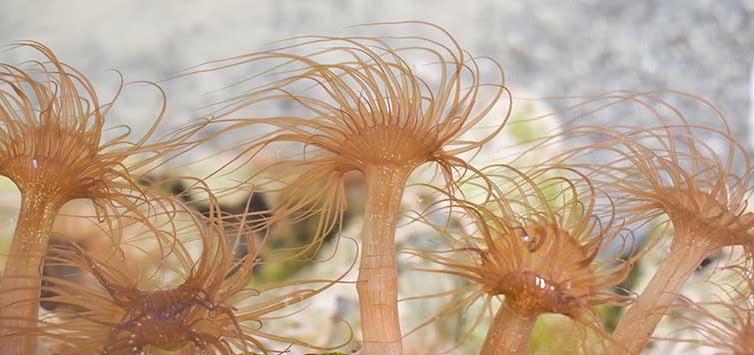
Peppermint shrimp are omnivorous scavengers, feeding on a variety of food sources within the aquarium. In the wild, their diet primarily consists of Aiptasia anemones, which make up a significant portion of their food intake. In captivity, however, their diet should be supplemented with various other foods to ensure proper nutrition.
While they will naturally graze on algae and detritus, it’s essential to provide them with high-quality, nutrient-rich foods. Frozen or live mysis shrimp and brine shrimp are excellent protein sources that should be included in their diet. These can be fed to your shrimp every other day to maintain their health and energy levels.
Related: Saltwater Algae Types: Identification, Causes, and Management
In addition to mysis and brine shrimp, incorporating a variety of foods will help promote their overall well-being. Offer a diverse diet that includes marine pellets, flakes, and other prepared foods formulated for marine invertebrates.
Providing this varied diet will ensure that your Peppermint shrimp receive the necessary vitamins and minerals needed for growth, molting, and reproduction.
Check out our article on Berghia Nudibranch vs. Aiptasia Eating Peppermint Shrimp (Ultimate Guide)
Peppermint Shrimp Lifespan and Hardiness
Peppermint shrimp are relatively hardy creatures, making them suitable for both beginners and experienced aquarists. With proper care and a suitable environment, they can live for 2-3 years in captivity.
These shrimp are adaptable and can handle minor fluctuations in water parameters, but it is essential to maintain a stable, clean environment for them to thrive.
How Many Peppermint Shrimp Should You Add to Your Tank?
Peppermint shrimp are social creatures and can be kept in groups. As a general guideline, you can add one Peppermint shrimp per 10-15 gallons of water. However, it is crucial to ensure that your tank has ample hiding spots and a peaceful environment to avoid territorial disputes and potential aggression.
How to acclimate your peppermint shrimp
To ensure a smooth transition into your aquarium, acclimate your Peppermint shrimp slowly and gradually to the tank’s water parameters.
By following these steps you can ensure your shrimp is properly acclimated:
- Float the bag: Start by floating the unopened bag containing the shrimp in your aquarium for about 15-20 minutes. This allows the water temperature inside the bag to equalize with your tank’s water temperature.
- Drip acclimation: After the temperature has equalized, slowly drip water from your tank into the bag over the course of an hour or more. This helps the shrimp gradually adjust to the water chemistry in your tank, minimizing stress.
- Net transfer: Once the shrimp have been acclimated to the tank’s water, use a net to gently transfer them into the aquarium. Avoid pouring the water from the bag into your tank, as it may contain contaminants.
Compatibility with Other Tank Inhabitants:
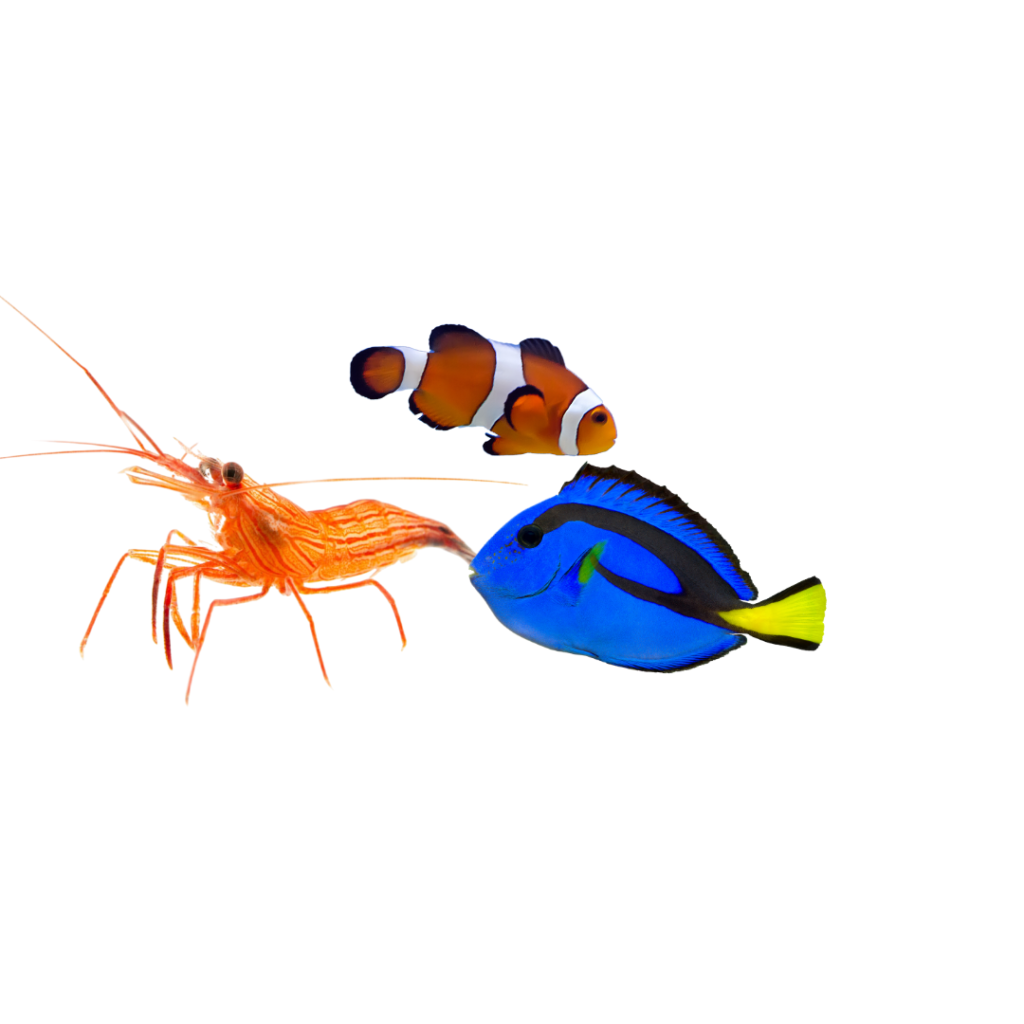
Peppermint shrimp are generally peaceful and compatible with most reef tank inhabitants. However, there are a few things to consider when adding them to your tank:
- Fish compatibility: Peppermint shrimp coexist well with most reef-safe fish. However, avoid housing them with aggressive or predatory fish species, such as lionfish or triggerfish, which may consider them a meal.
Related: The 19 Best Algae Eating Fish + Invertebrates for Saltwater Tanks
- Invertebrate compatibility: These shrimp can be kept with other invertebrates like cleaner shrimp, fire shrimp, and various snails or crabs. Be cautious with anemones, as some species may sting or consume shrimp.
- Coral compatibility: Peppermint shrimp are generally considered reef-safe, meaning they will not harm corals. However, there have been occasional reports of them nibbling on soft corals. Keep an eye on your shrimp’s behavior to ensure they are not causing any harm to your corals.
- Shrimp numbers: Maintain a ratio of one Peppermint shrimp per 20-30 gallons of tank water. Too many shrimp in a small space may lead to territorial behavior or inadequate food supply.
Frequently Asked Questions:
As Peppermint shrimp become increasingly popular among aquarists, many questions arise about their care and compatibility. In this section, we will address some common questions related to these fascinating invertebrates:
Are Peppermint shrimp hardy?
Yes, they are relatively hardy creatures and can adapt well to various water parameters, making them suitable for beginners and experienced aquarists alike.
Learn More About The Saltwater Nitrogen Cycle
How long do Peppermint shrimp live?
With proper care and a suitable environment, Peppermint shrimp can live for 2-3 years in captivity.
Can Peppermint shrimp be housed with other shrimp species?
Yes, they can coexist with other shrimp species, such as cleaner shrimp, as long as there are enough hiding spots and a peaceful environment.
Do Peppermint shrimp eat coral?
While Peppermint shrimp are generally reef-safe, it is essential to provide them with a varied diet to minimize the risk of them nibbling on coral polyps.
Final Thoughts
Aiptasia eating Peppermint shrimp are the perfect combination of beauty, functionality, and hardiness. These captivating invertebrates not only add a touch of color and excitement to your tank but also serve as natural pest control against the dreaded Aiptasia anemones.
By providing a suitable environment, a well-rounded diet, and proper acclimation, you can enjoy the benefits of these incredible creatures while keeping your reef aquarium healthy and thriving.
Read Next: Rock Flower Anemone: Brighten Up Your Saltwater Aquarium
looking to add a peppermint shrimp to your reef tank? Click here

